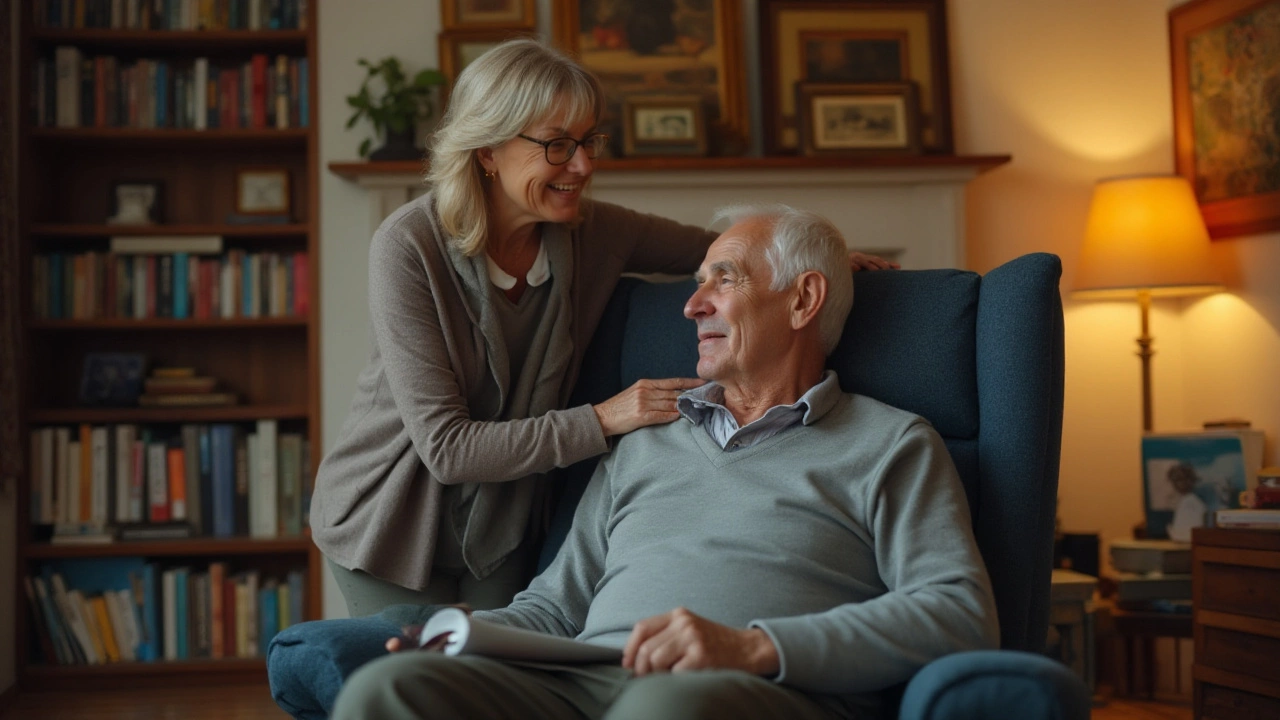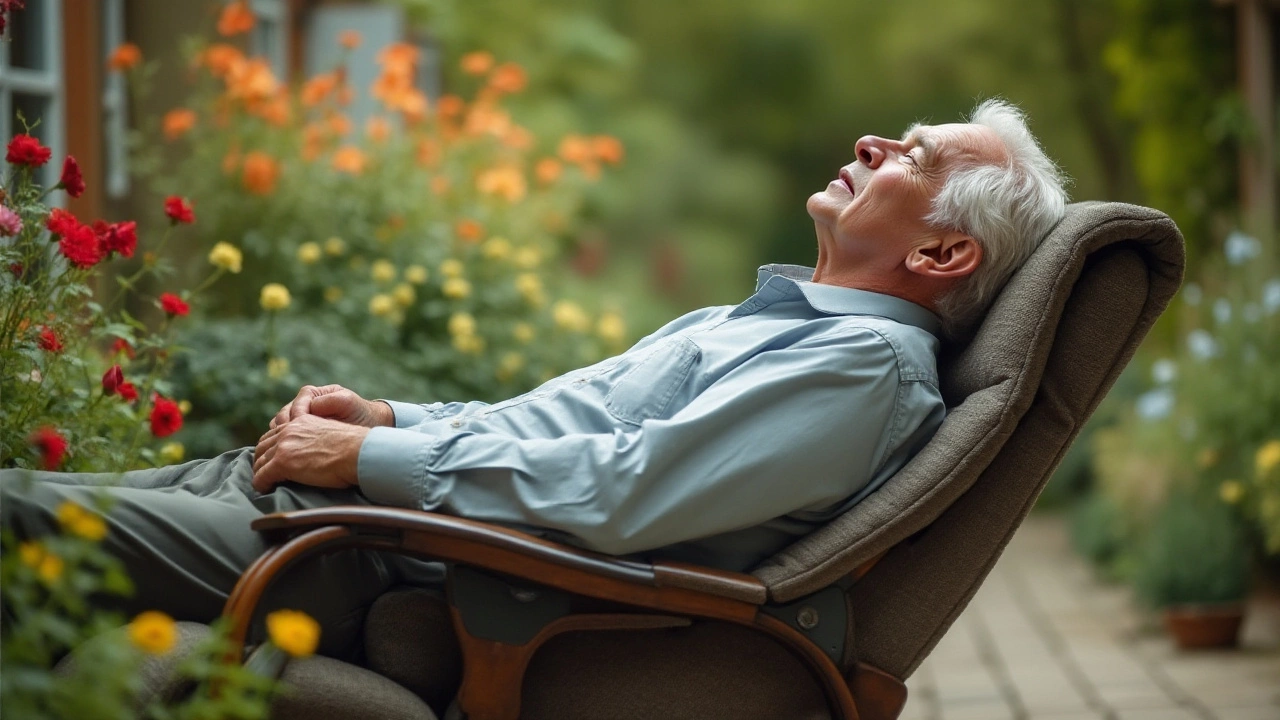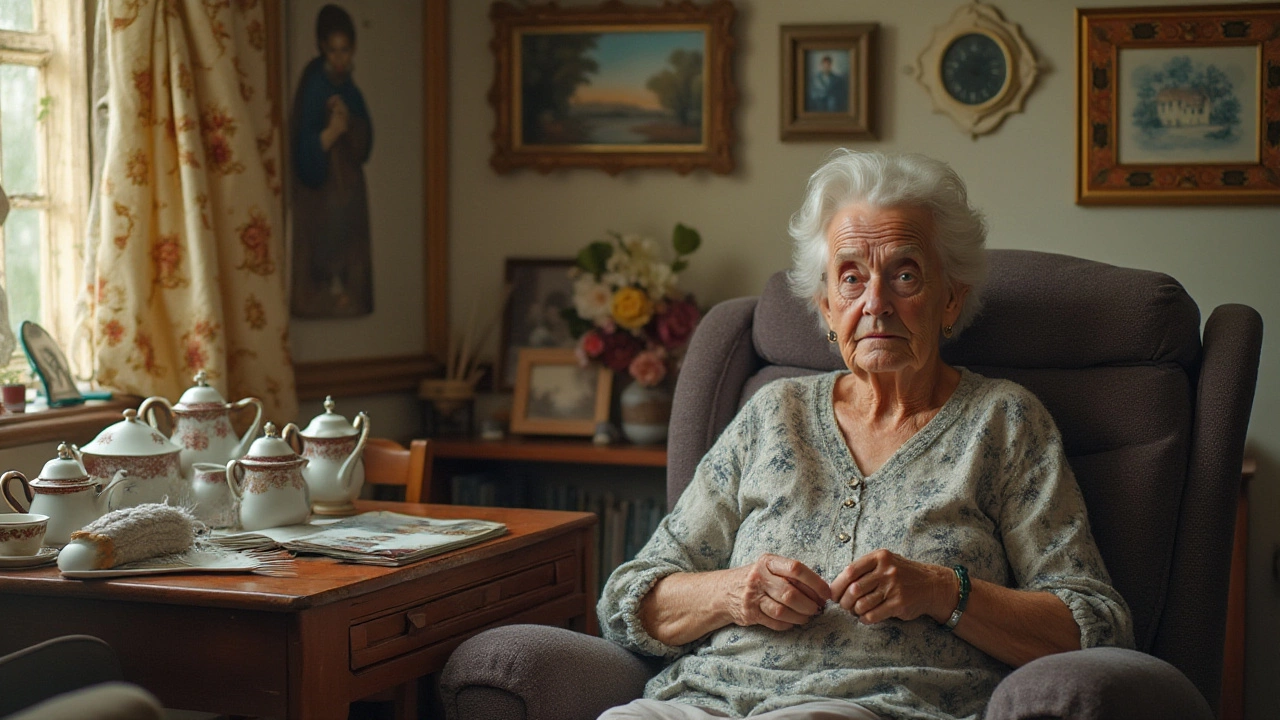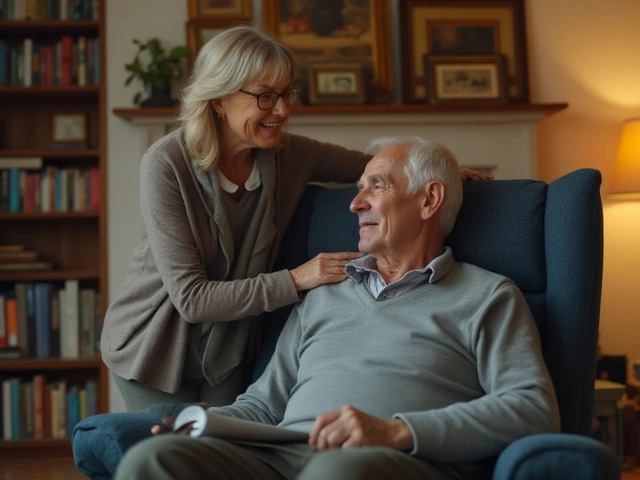Understanding Age-Related Stiffness and the Role of Recliner Chairs

As the pages of the calendar turn and another year is added to the ledger of life, a common issue rears its nagging head: stiffness. It's a reality many of us face as time marches on, where joints creak and muscles protest more than they did in the bright days of youth. The truth is, our bodies, engineered to move with graceful efficiency, undergo a variety of changes as they age, and stiffness is but one visitor among many.
But why does this stiff sensation become more pronounced with age? It's a puzzle tackled by scientists, and a concern for those seeking comfort in their homes. Among the arsenal of solutions, recliner chairs stand out as beloved allies. Known for their plush comfort and adjustable design, these chairs can potentially ease the aches that settle with age. More than just a piece of furniture, a well-chosen recliner can offer tangible relief.
This article takes a candid look at the biological reasons behind our stiffening bodies and the ways in which our environment, specifically our living room seating, can either hinder or help our quest for comfort. Let's explore how understanding the nuances of age-related stiffness and making informed decisions about our seating choices can lead to a more flexible, comfortable life.
- The Science Behind Aging and Stiffness
- The Importance of Comfortable Seating
- Recliner Chairs: A Solution for Stiffness
- Choosing the Right Recliner for Your Needs
- Tips for Enhancing Mobility and Comfort
The Science Behind Aging and Stiffness
As we grow older, our bodies reveal stories as intricate as the rings of a tree. Stiffness often takes center stage in this narrative, acting as both an aging marker and a reminder of years we've gathered. The key to understanding why age-related stiffness occurs lies in exploring the body's natural architecture and its inherent changes over time. With age, our muscles and joints undergo several transformations. Cartilage, the smooth, rubbery tissue that covers the ends of bones, begins to thin, losing its ability to cushion the impact between joints. This thinning can lead to increased friction, ultimately causing joint pain and stiffness. It's like a door hinge that creaks when lubrication runs dry.
Moreover, our muscles, once supple and strong, tend to lose mass; a condition known as sarcopenia. This muscle loss, paired with reduced elasticity of connective tissues, reduces the range of motion, making daily movements feel laborious. As if taking a page from biological evolution, these changes underscore the efficiency of adaptation, albeit not always aligned with the vitality we wish to preserve. Interestingly, research suggests that inflammation plays a significant role in this equation as well. Chronic inflammation, often exacerbated by lifestyle choices such as diet and physical inactivity, accelerates the degeneration of joints and surrounding tissues. This inflammatory response, though subtle, can compound, becoming a silent architect of our aches and stiffness.
Dr. Jane Doe, a noted gerontologist, states, "Aging gracefully isn't merely about aesthetics; it involves maintaining function and mobility. Our bodies possess an innate intelligence, yet we must heed its signals, adapting our environments and habits to support it."
"Aging gracefully isn't merely about aesthetics; it involves maintaining function and mobility. Our bodies possess an innate intelligence, yet we must heed its signals, adapting our environments and habits to support it." — Dr. Jane Doe, Gerontologist
Moreover, genetics also carries weight in this scenario. Some individuals experience stiffness earlier due to genetic predispositions to conditions like osteoarthritis, while others may find resilience in their genetic coding. Environmental factors and personal habits weave their threads into this genetic tapestry, creating a complex picture that’s unique to each individual. The role of recliner chairs in this context becomes particularly intriguing. As the body's needs evolve, seating solutions tailored to alleviate pressure and enhance relaxation gain importance. While recliner chairs may seem like passive bystanders in a home, they might just be silent allies, offering strategic support to the aging musculoskeletal system.
In addressing the stiffness that accompanies aging, it's essential to also consider the holistic interplay of biological, genetic, and lifestyle influences. Such understanding paves the way for practical solutions that harmonize with the body's natural course. Potentially, this approach could transform the narrative of aging from one of inevitable decline to one of empowered choices, enabling a life lived with comfort and mobility.
The Importance of Comfortable Seating
As the symphony of life plays on, the physical discomforts that accompany aging can be a discordant note, disrupting our daily harmony. One of the most underestimated yet crucial elements of our lives is how we sit. The very act of sitting, often taken for granted, exerts a significant influence on our body's well-being, especially as we age. It's here that the importance of comfortable seating becomes profoundly clear. Bidding farewell to aches and pains hinges on the chairs we frequent, suggesting that perhaps it’s time for thoughtful consideration of our seats.
Comfortable seating isn’t just about sinking into paradise; it’s about support, posture, and aiding the body’s natural alignment. As we advance in years, our bodies undergo changes such as reduced muscle mass and joint flexibility, which can be exacerbated by prolonged periods of improper seating. Recliners, with their ability to tilt, lift, and cradle, offer a reprieve by promoting healthy circulation and reducing pressure on the spine and other susceptible areas. This type of seating can combat the peculiar, almost nagging sensation of stiffness we experience as we age, allowing our sinews and bones to rest in optimal positions.
According to a study published in the Journal of Physical Therapy Science, appropriate ergonomic postures significantly alleviate discomfort associated with prolonged sitting. The researchers emphasized that optimal seating encourages proper spinal alignment and weight distribution, reducing the chances of stiffness and soreness. In such seating, recliner chairs excel, proving to be more than just an avenue for relaxation but a form of preventive health care.
"A chair is a very difficult object. A skyscraper is easier." - Ludwig Mies van der Rohe
This playful remark from Mies van der Rohe subtly underscores the importance of seating design, challenging us to think beyond aesthetics to functionality. Heeding this wisdom, choosing the right seating is akin to making a strategic investment in our health. Recliner chairs serve not just the elderly; they are allies for anyone facing the uncomfortable realities of modern life, where long hours of sitting are often unavoidable.
The act of finding the right chair may involve a detailed exploration of one's unique needs. Factors such as the height of the chair back, adjustability, and cushioning all play roles in defining comfort and support. Moreover, these features contribute to reducing the risk of developing conditions like pressure sores, a concern for those with limited mobility. The careful selection of a recliner chair, when informed by understanding of one's own body, can significantly transform the sitting experience from average to exceptional, providing both relief and a measure of joy, turning a simple act into one of rejuvenation and care.

Recliner Chairs: A Solution for Stiffness
The march of time is relentless, and as the years file by, our bodies sometimes voice their grievances more vehemently. One oft-lamented consequence of age is stiffness—a tightening of joints and muscles that can make even the most mundane movements feel like monumental tasks. It's this very challenge that some find relief in a surprising ally: the humble recliner chair. Many might dismiss these seats as mere lounging luxury, but they can indeed play a pivotal role in improving the stiffening scene that accompanies aging.
Recliner chairs are more than their luxuriant appeal. Their design prioritizes comfort seating and proper posture. This is crucial because as we age, our joints and muscles crave support in the right places. Unlike conventional seating where pressure might accumulate, recliners allow you to adjust your position easily, spreading your body's weight evenly, hence relieving stress on achy parts. An adjustable backrest and leg rest can help the user find the most comfortable position, promoting better circulation and reducing muscular strain, something that today's seniors highly appreciate. Their adjustable nature provides tailored support, fostering relaxation, which is an essential remedy for age-related stiffness.
Would you believe recliners could be scientifically beneficial? A study by the University of Pittsburgh found that proper reclining can reduce spinal pressure by approximately 15 percent compared to sitting upright. This indicates that they aren't just about finding comfort but also about ensuring health benefits by reducing the strain that might worsen stiffness. Furthermore, many recliners offer features like raised seats for easier getting in and out, and motorized lifting mechanisms to augment mobility. These modifications ensure that not only is comfort achieved, but safety as well, allowing seniors to feel a sense of independence while addressing their mobility issues.
Of course, not all recliners are created equal. To find true solace in a recliner, one must choose wisely. The material, cushioning, and ergonomic features all contribute to their effectiveness against stiffness. Soft leather or high-quality fabric can ensure that the chair remains comfortable yet durable over years of use. More than that, some models include built-in massagers or heating elements, which can further alleviate muscular pain and improve circulation. An informed selection process that includes sitting in and trying out various models could make all the difference.
Choosing the right recliner might seem daunting with the plethora of options available, but reflecting on a few considerations can simplify the task. First, evaluate your personal needs: Do you need additional lumbar support? Is a lift mechanism essential? Where will the chair be placed? Consider the space and style to ensure the chair blends seamlessly with your home aesthetics. Finally, don't overlook quality. It might be tempting to save a few bucks here and there, but investing in a quality product often guarantees not only comfort but longevity and satisfaction. According to an article in 'Senior Living,' "Recliners aren't just for comfort; they're about life quality."
Choosing the Right Recliner for Your Needs
Choosing the perfect recliner chair can be quite the endeavor, particularly when you're aiming for both style and suitability in alleviating age-related stiffness. The senses are keenly tuned to finding that blend of support and coziness, knowing that a suitable recliner can be a trusty ally. First things first, consider the dimensions of your space alongside the chair’s size. It can be thrilling to find a chair that invites you to sink into it, but it must also allow for room to maneuver and breathe in your living area. Measure your available space carefully.
Next, zero in on the recliner's mechanism. Today's chairs boast varied functionalities, from manual to power-operated adjustments, even to remote-controlled positions. Bask in the ease of pushing a button to recline after a day bustling with activity. One might consider a power recliner if health conditions affect your arm strength or if maintaining a varied degree of recline is a much-needed luxury. A manual alternative can also prove sufficient, offering a trusty pull lever that requires just a tad of elbow grease.
We often forget how effective the right support can be when it comes to our daily comfort," says Dr. Emily Green, a specialist in orthopedic care. "A well-chosen recliner can significantly reduce the discomforts that come with aging."
Material is another pivotal consideration. Leathers, fabrics, and modern synthetic blends each bring their charm and maintenance quirks. Soft, breathable fabrics might hold appeal for their warmth in chillier climates, while leather exudes a dignified elegance, easy to clean, yet easy to puncture or scratch. You'll want to browse color swatches and think about durability, especially in high-use households complete with pets or grandchildren.
Bearing in mind health and mobility, seek out models with added features like lift-assist, ideal for easing transitions from sitting to standing without extra strain on hips and knees. Some recliners now pack heating and massage capabilities—an indulgence turned necessity for many experiencing recurrent stiffness or back pain. When factored together, these comforts transcend the simple notion of a chair, morphing into a personal refuge of comfort.
Lastly, listen to the voice of experience. Customer reviews and expert opinions can shed light on models you may not have considered, highlighting nuances not explicit in glossy brochures. Visit showrooms and embrace a hands-on approach. Take time to recline and converse with staff who bear firsthand insights that could steer your choice. While browsing, consider a recliner as more than an ornament; it's an investment in health and tranquility, a commitment to your body's comfort amidst life's inevitable march forward.

Tips for Enhancing Mobility and Comfort
Growing older doesn't mean surrendering to the aches and tightness that may creep into everyday life. Finding ways to enhance mobility and achieve comfort can indeed reshape one's experience of aging. A balanced approach that combines lifestyle changes and smart choices in home furnishings, like investing in supportive recliner chairs, can make a remarkable difference. Let’s take a deeper dive into methods that are not just useful but essential for one’s well-being.
Nurturing your body with regular exercise is number one on the list. Regular physical activity is often underestimated, but it is a true powerhouse for maintaining flexibility. Integrating activities like yoga and Tai Chi can significantly improve balance and muscle tone. Both are gentle yet effective, making them ideal for those who deal with age-related stiffness. Some studies champion these exercises as keys to unlocking a more vigorous and less stiff future. Pair these with regular physical therapy sessions if needed, especially when a personalized touch is necessary for unique issues one might face with aging bodies.
Nutrition holds an equally important role in ensuring joints and muscles remain pliable. A diet rich in anti-inflammatory foods, such as omega-3 fatty acids found in fish, nuts, and seeds, can work wonders. Fruits and vegetables, especially those bursting with vitamins like leafy greens and berries, can bolster joint health. They offer a natural way to combat the discomfort of senior mobility issues. Consulting with a dietitian can provide further insights into a diet plan tailored to one’s needs—simple changes often result in profound effects.
Hydration is another cornerstone that simply cannot be overlooked. Water acts as a lubricant for the joints and muscles, facilitating smooth movement. Consistent hydration ensures that nutrients are efficiently transported to all parts of the body. Aim to drink at least 8 glasses of water a day and adjust upward during warmer months or increased activity levels. Herbal teas and broths are also good sources of hydration, especially when water seems monotonous.
Now, let’s pivot to your home environment, where one spends significant time. Choosing ergonomically designed furniture, especially recliner chairs, is a critical move. A well-cushioned chair with adjustable features allows one to find that sweet spot where body stress is minimized. Look for features like lumbar support and easy-to-reach controls that accommodate a person’s specific needs. Adding extra cushions or a warmed blanket can further sweeten the experience—items that easily integrate into your daily routine with great benefit.
A wise person once said, “Comfort and ease lead to a healthier mind and body.” This notion is echoed in countless studies highlighting the importance of a stress-free environment on physical health. A quote from Dr. James Levine succinctly captures this,
"Movement is a medicine for creating change in a person’s physical, emotional, and mental states."This cannot be overstated, as an environment that promotes ease and relaxation contributes significantly to a happier, healthier life.
Lastly, consider technology as an ally. Apps and gadgets designed to track physical activity or provide guided exercise regimens are increasingly becoming household staples. These tools can offer encouragement, set achievable goals, and track progress. While they don’t replace professional advice, they align with a personal commitment to maintaining mobility and comfort.
Aging gracefully is truly an art. A thoughtful blend of exercise, nutrition, hydration, the right furniture choices, and technological support paves the way. While being proactive might seem challenging, integrating these tips can transform everyday living, keeping the stiffness at bay and carving out a more comfortable, mobile life.
